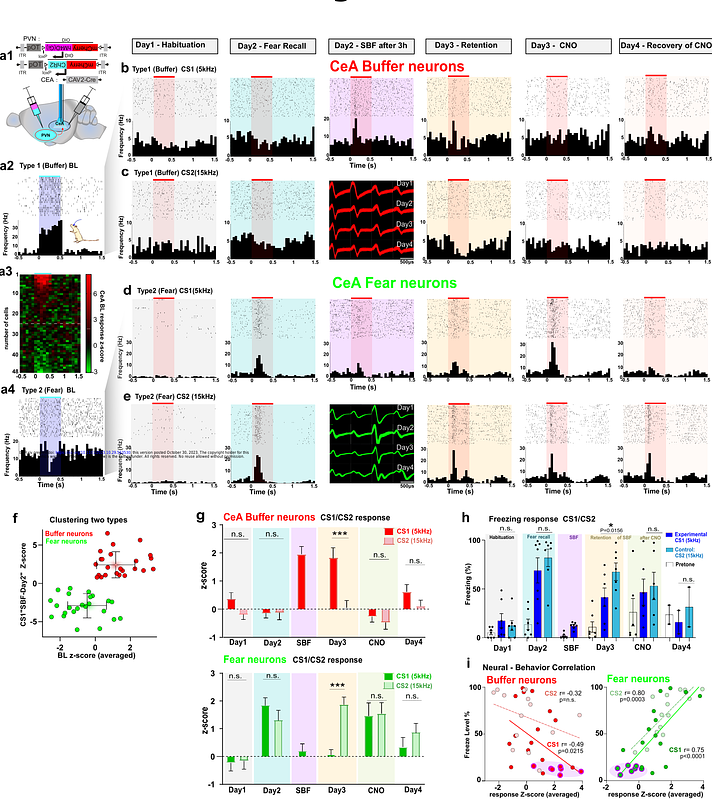Social buffering switches fear to safety encoding by oxytocin recruitment of central amygdala "buffer neurons"

Social buffering switches fear to safety encoding by oxytocin recruitment of central amygdala "buffer neurons"
Hegoburu, C.; Tang, Y.; Niu, R.; Ghosh, S.; Triana del Rio, R.; Salgado, I.; Abatis, m.; Caseiro, D. A. M.; grundschober, c.; STOOP, R.
AbstractThe presence of a companion reduces fear, but the precise neural mechanisms underlying this social buffering of fear (SBF) are incompletely known. We studied SBF encoding in the amygdala of rats that were fear-conditioned (FC) to auditory conditioned stimuli (CS). Pharmacological, opto,- and chemogenetic interventions showed that oxytocin (OT) signaling from hypothalamus-to-central amygdala (CeA) projections was required for acute fear reduction in the presence, and SBF retention 24h later in the absence of the companion. Single-unit recordings with optetrodes revealed fear-encoding CeA neurons (characterized by increased CS responses after FC) to be inhibited by SBF and blue light (BL) stimulation of OTergic projections. Other CeA neurons developed CS responses only after SBF that persisted during SBF retention. Their baseline activity was enhanced by BL and exposure to the companion. SBF thus switches the CS from encoding \"fear\" to \"safety\" by OT-mediated recruitment of a distinct group of CeA \"buffer neurons\".